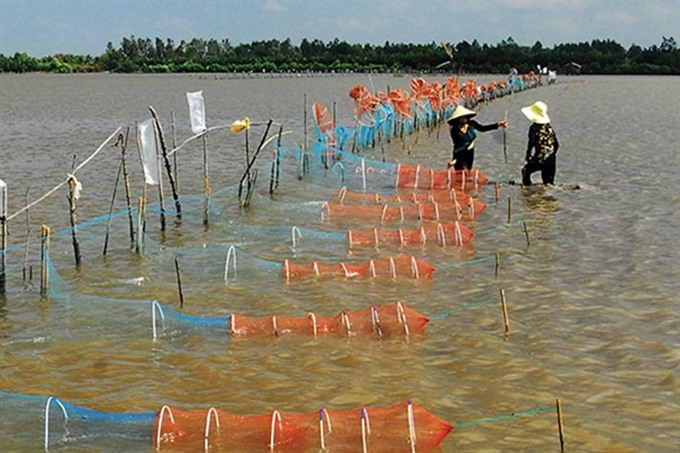 Society
Society

A plan to turn a lake into a nature reserve has hit a snag due to blood clam farming.
 |
| Blood clam farming in Thị Tường Lake in the southernmost province of Cà Mau. — Photo laodong.com.vn |
CÀ MAU — A plan to turn a lake into a nature reserve has hit a snag due to blood clam farming.
Some 640 households in the three districts of Phú Tân, Cái Nước and Trần Văn Thời around Cà Mau Province’s Thị Tường Lake make a living from seafood, with 30 per cent of them involved in blood clam farming, Lao Động reports.
For years, they have ignored request from the province’s authorities to remove their blood clam farm constructions so as to turn the 700ha lake into a natural reserve.
New oyster farm constructions keep emerging despite warnings from authorities, as blood clam farming is their only means of earning a living.
Some farmers have been making billions of đồng per year. Thái Văn Đen, a farmer in Phú Tân District who lives on the lake, earned more than VNĐ1 billion (US$43,900) in 2017 after investing VNĐ520 million ($22,800) into raising clams.
Even those that were hired to raise the sea creatures for others have made good money, about VNĐ200,000 ($8.8) per day.
“We know raising blood clams is banned in the province, but we don’t know how to survive without it,” said a local farmer.
“We would only leave if the State deliberately wants to acquire the lake,” he said.
As a result of the booming seafood business, the lake’s water surface area has sparked disputes between farmers.
Some make money by selling or renting their parts of the surface to others, while some intentionally harvest blood clams from others’ farms.
Farmer Thái Phước Lợi has had 20 years of experience in clam farming and owns 8ha of the lake’s water surface area. The large farm was accumulated over the years by different generations of his family.
“We bought [different parts of the lake], and also sold some to other farmers,” he said.
“The rental fee and purchase price of the lake’s water surface area varies, depending on the location and flow of water,” he added.
Authorities of Phú Tân District are aware of this water surface business, but they don’t know how to deal with it.
“We have not been able to develop any preventive measures or effective solutions for the matter,” said Nguyễn Trường Sơn, vice chairman of the district’s People’s Committee.
“There are already 60 households that make a living out of the lake in one of the district’s communes alone, not to mention people from other districts who rent parts of the lake,” he said.
Turning Thị Tường Lake into a natural reserve seems a long way down the road. On the bright side, some farmers, like Thái Văn Đen in Phú Tân District, said he would consider giving up his blood clam farms to turn the plan into reality.
“If such a natural reserve is proven to provide benefits for local residents, some of my farmer friends and I will be willing to move out of the lake and return our water surface area to the State,” he said. — VNS




